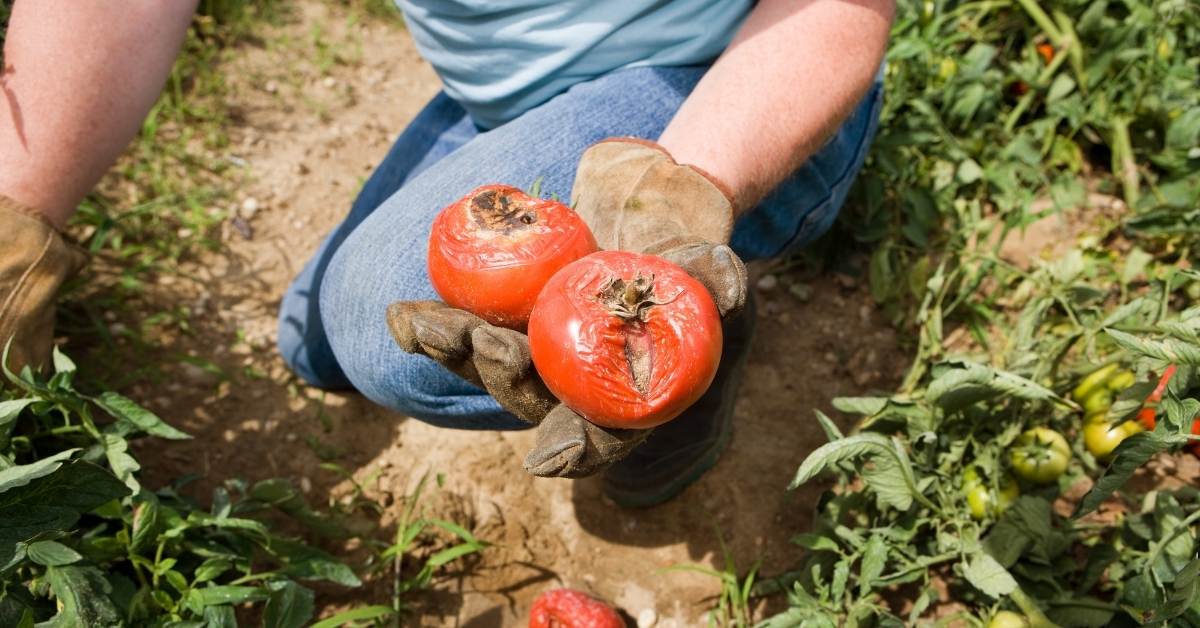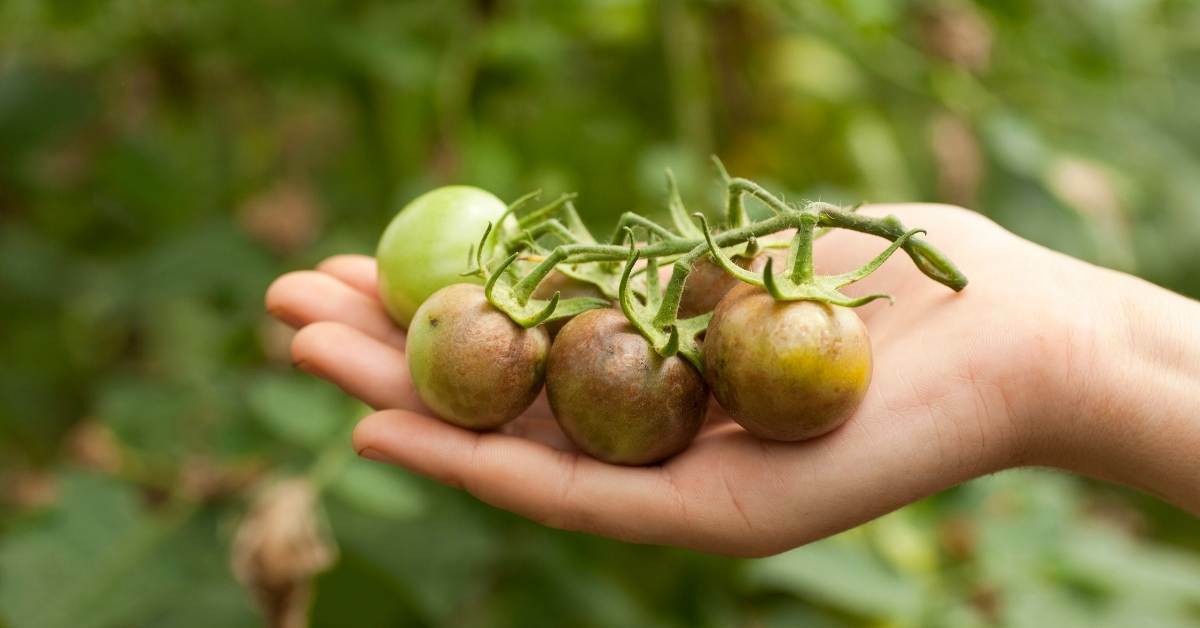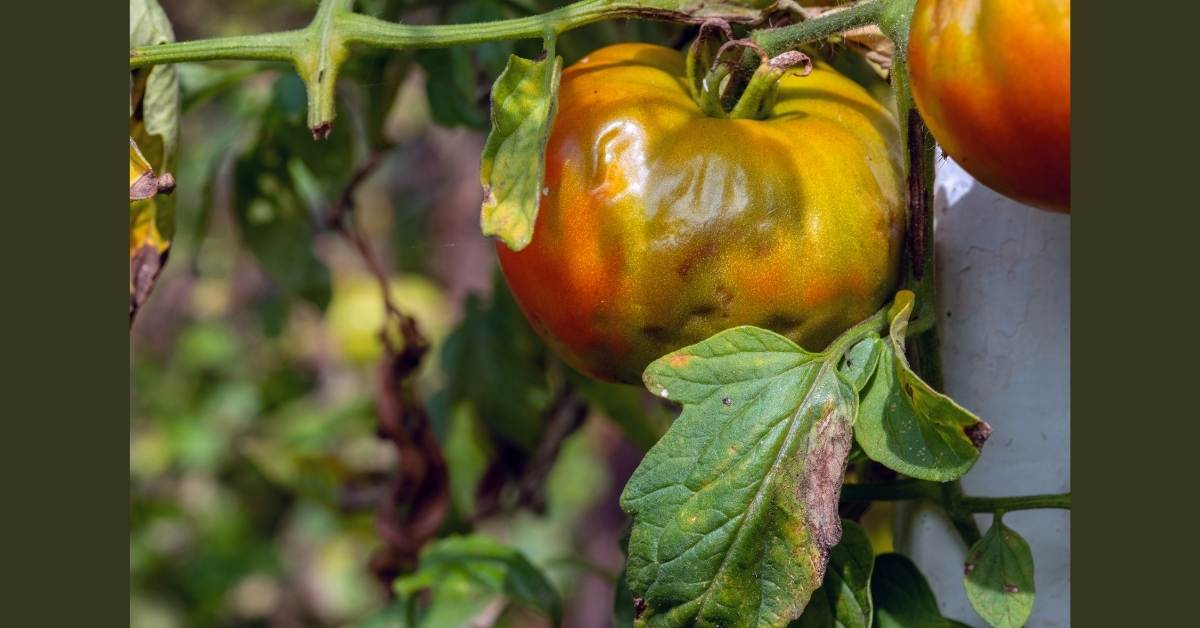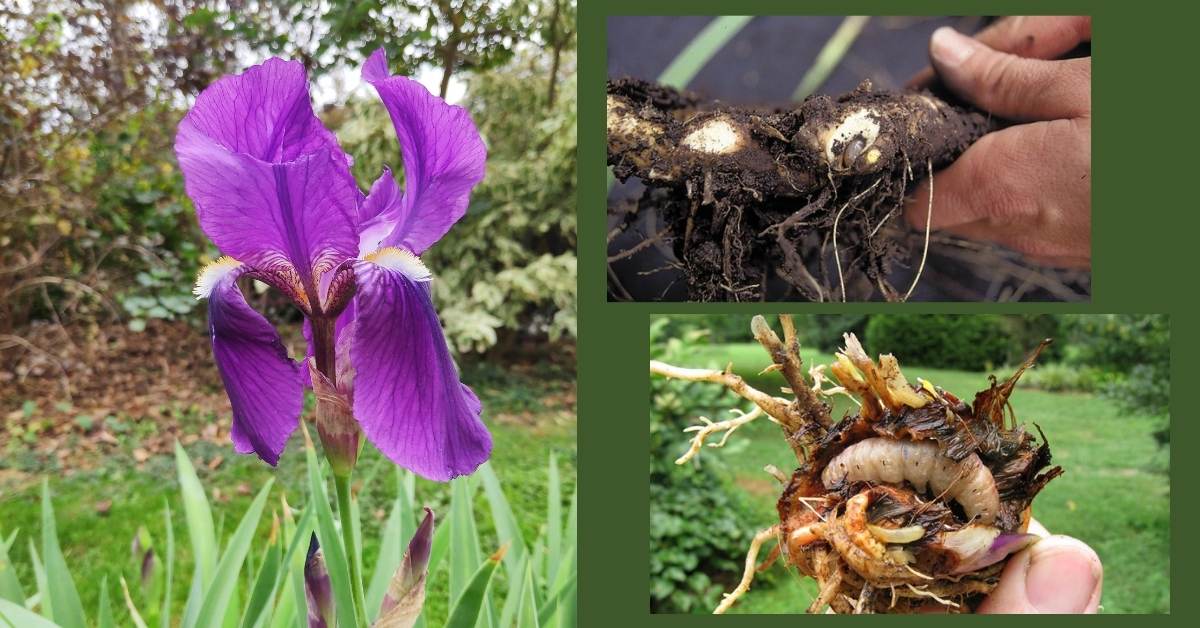There are two types of blight diseases that can attack tomatoes, early blight, and late blight. Both are caused by fungal pathogens. Late blight is a more severe disease and has become more common in the last few years. Here are the explanation of those problems and how to control tomato blight diseases with several ways.
Early blight usually weakens but does not entirely kill tomato plants. Late blight will kill tomato plants.
Late blight can also affect potatoes (it is the disease that caused the Great Iris Potato Famine in the mid-1800s), and some strains can also affect petunia.
Both types of blight are spread by spores. Early blight can persist in partly decomposed plant tissue for a year or more but does not survive in fully decayed plant material.
Late blight requires living plant tissue for overwintering and usually does not produce spores that can survive through winter in cold climates. Late blight can survive through winter in potato tubers and perennial weeds in the tomato family.
There are some recommended cultural practices that can reduce problems with blights and other diseases.
How To Control Tomato Blight Diseases?
- Crop rotation: Do not plant tomatoes in the same part of the garden year after year. Use a crop rotation of at least 3 years before returning the tomato to a bed it has been grown in previously. Like potatoes, eggplant, or peppers, don’t follow tomato plants with other plants in the tomato (nightshade) family.
- Sanitation: Remove all disease-infected plant material at the end of the season. Dispose of it by burning or in the trash. Do not add it to compost. Any plants affected with late blight are best removed from the garden as soon as symptoms are confirmed.
- Weed hosts: Pay extra attention when weeding and remove plants related to the tomato, including nightshade, jimson weed, and horsenettle. These weeds can serve as hosts for blight and other diseases.
- Airflow: Ensuring that there is good airflow will help to keep leaves dry and reduce microclimates where blight may be promoted. Orient rows with the prevailing wind to allow for good airflow. Keep plants supported to keep them off the ground helps ensure airflow is good. Using organic mulch can also help to keep any blight spores from moving from the soil to the plant leaves. Some growers remove the lower leaves (below the first fruit truss) to reduce the chance of disease spores splashing onto the leaves.
- Moisture management: Do all watering early in the day so that leaves can completely dry before nightfall, and avoid getting the leaves wet when watering. Do not work in the garden when plants are wet to prevent the potential to spread disease.
- General culture: Ensuring that plants are well fed and providing general good culture to keep plants free from stress helps keep them healthy and reduces the possibility of infection.
Chemical Controls (Fungicides)
There are both organic and conventional fungicides that can help protect tomatoes from blight diseases. It is important to remember that fungicides cannot cure infected plants; they can only help to prevent plants from becoming infected.
Therefore, fungicides must be applied before disease symptoms are seen and be re-applied regularly. It is essential to read and follow all label instructions when applying fungicides.
Organic options include copper formulations and Serenade, which is a biological fungicide – a beneficial microbe that helps plants resist blight infection. Some gardeners have found improved protection by alternating Serenade sprays with copper sprays, applying Serenade once a week for 2 weeks, then copper the third week, then starting again with Serenade.
For a conventional fungicide, Bonide Fung-Onil Fungicide contains chlorothalonil, which is one of the more effective chemicals for preventing blight.
Resistant Varieties
Planting varieties resistant to blight diseases can help reduce problems. Resistant varieties are not immune to disease and can still become infected, especially in years with weather conditions that increase disease pressure (prolonged wet weather and cool temperatures.)
Note that there are different strains of late blight disease, and some of the older late blight-resistant varieties are not resistant to the newer blight strains.




